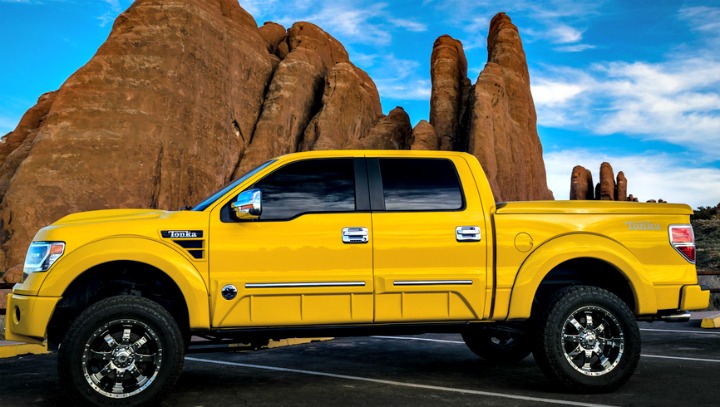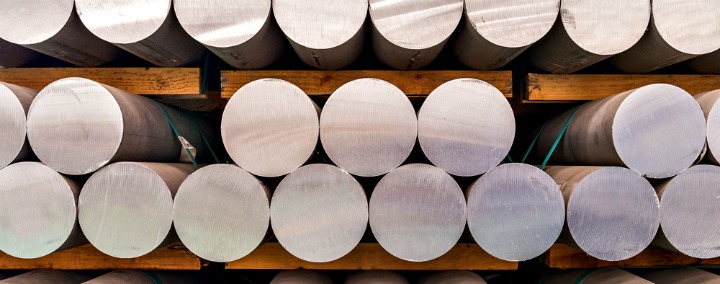Aluminum May Build Better Trucks but Can Body Shops Keep Up?

By Tim Spell
The world of pickup collision repair rapidly is being pushed into a new orbit that revolves around aluminum.
Spurring this focus on lightweight aluminum is its contribution to increased fuel economy, and a 2012 government mandate to meet future Corporate Average Fuel Economy standards. This CAFE standard requires automakers to raise the average fuel efficiency of new cars and light trucks to 54.5 miles per gallon by 2025.
Lighter pickups also gain advantages in all-around performance and work capability, and can be powered by smaller engines and fitted with reduced-sized components.
ALSO: How Sonata Turned Hyundai Around
Independent body shops are under pressure to take the major step of adding aluminum body-repair capability. Sparking this need is the onrush of Ford pickups with all-aluminum bodies, which began with the 2015 F-150. These perennial U.S. top-sellers lost about 700 pounds, due in part to high-strength,military-grade aluminum-alloy body construction.
Heightening the sense of urgency to provide aluminum body repair is General Motors’ announcement that its next-generation 2019 Chevrolet Silverado and GMC Sierra pickups will be fitted with an aluminum hood, doors and tailgate. The 2019 GM pickups shed 450 pounds, partly resulting from the use of aluminum.
Ram’s all-new 2019 1500 pickup will wear an aluminum hood and tailgate that contribute to its 225-pound weight loss. Ram had pioneered the use of aluminum body panels on trucks with an aluminum hood for the 2009 model year.

Working with aluminum requires body shop changes
While there are large numbers of aluminum-bodied F-150s on the road, many collision-repair facilities remain in limbo regarding the decision to provide aluminum body-repair services. The quandary lies in the need for special training, equipment, tools and work area.
Costs depend on the depth of repair services the shop is undertaking, and could require an investment in the $200,000 range.
A must for aluminum repair is the need for an area apart from the rest of the shop. The separate area is required to avoid contaminating aluminum with steel or carbon particles. Dissimilar metals making contact can cause galvanic corrosion. This cross-contamination of metals can lead to paint and adhesion failure.
“The big question for independent shops was always, ‘do you shut down one whole bay to do aluminum repairs?’” says Scott Benavidez, director of the Automotive Service Association’s collision division. “Some shops did the math and have just sent that work down the road. Getting one or two jobs a year did not justify shutting down a whole bay.”
Another problem is that, until recently, insurance companies weren’t paying extra to have the work done, Benavidez says. “Add in the high cost of all new tools, and most have just put it off for now.”
Some shops have made the decision to push forward with aluminum repair to make sure they were ahead of the game, he says.
“Most are glad that they did because it has been a giant learning curve.”
Improving aluminum-repair education and dropping tool prices are helping to ease this process.
Ford reports that access to aluminum collision repair service and repair costs aren’t concerns for F-Series truck owners. The manufacturer points to a huge U.S. network of authorized dealer and independent aluminum-repair body shops, and to its trucks’ labor-saving modular construction. This build method provides body shops with repair shortcuts such as sectioning options for floor-pan and cab cross-members replacement, and a partial replacement procedure for the roof rail/A-pillar reinforcement tube.
“The F-150’s modular construction helps reduce the labor required to make major repairs, which helps lower potential repair costs,” says Mike Levine, Ford North America product communications manager.
According to a top industry source, he said, “the 2017 F-150 is the least-expensive full-size pickup truck to insure.”
Ford product information states: “With proper tools and training, cosmetic repairs to aluminum body panels will take a similar amount of time as steel-panel repairs.”
ASA differs on this issue, pointing to research that concludes aluminum dent repair is a more time- and labor-intensive process.
While repair and replacement of certain parts of the F-150’s frame, suspension and body are less labor-intensive, ASA findings report aluminum dent repair isn’t.
Benavidez says ASA partnered in a study with the National Alliance of Paintless Dent Repair Technicians that found aluminum is more resistant to damage and much more difficult to repair than steel. Tests showed it required 70-150 percent more pressure to repair damage in aluminum versus steel hoods.
“This test really helped us understand just how much harder aluminum is to repair,” he says. “It not only helped our PDR folks understand why they should charge more for aluminum repair, but it helped body shops and insurance companies understand the same thing.”
Complicating concerns about use of aluminum in vehicle construction is the future of the material’s cost. Aluminum prices rose significantly in 2017, and it’s unclear what will happen in 2018.
What’s certain is that a future with huge numbers of pickups requiring aluminum repair is inevitable. Meanwhile, it’s a wait-and-see situation regarding how independent body shops and insurance companies will adjust to the complexities of aluminum-repair demands.
